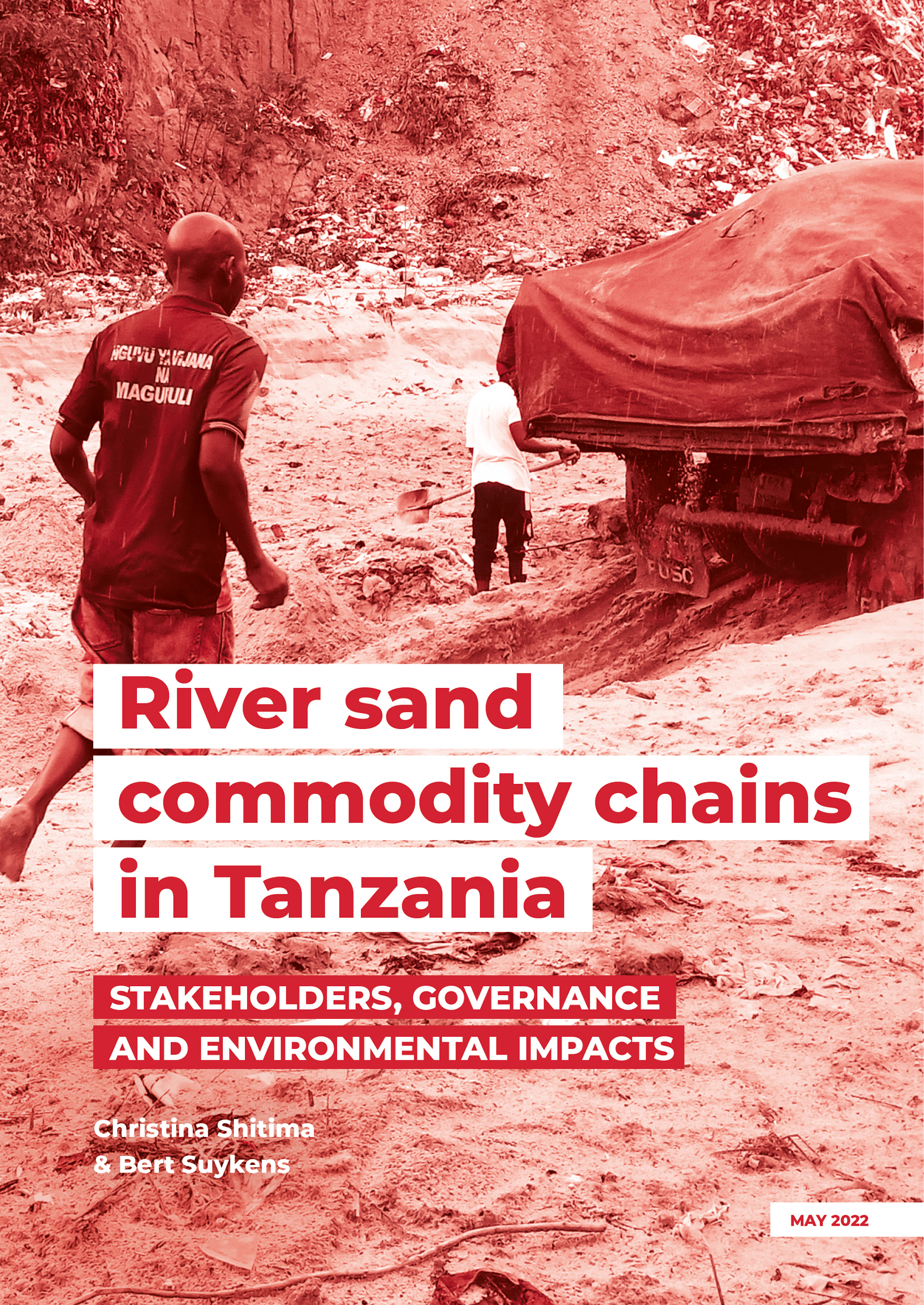River sand commodity chains in Tanzania
In recent years, Tanzania has experienced the growth of investment in development of public infrastructure such as construction of roads, bridges, railways and public buildings. Sand and gravel have become important resources for the accomplishment of these big projects. Consequently, sand extraction in Tanzania has seen a steep rise (see figure 1). While coastal sand mining in Tanzania (see e.g. Masalu 2002) and the semi-autonomous region of Zanzibar (see e.g. Ladlow 2015) has received most attention, the Dar es Salaam region has also seen a significant increase in the extraction of sand from rivers to cater to both private and public sectors demand
For a long time, sand mining in Dar es Salaam has been undertaken illegally, at areas not allocated for that activity and without any technical advices from the experts. Consequently, the activity became a large informal industry. While youth depend on the extraction activity as the major source of livelihood, other stakeholders such as food vendors at the extraction points, transporters and vehicle owners also earn their living from sand mining.
The arbitrary extraction of sand has caused extensive environmental damage such as erosion of riverbanks and lowering of river beds. As a result, most parts of Dar es Salaam are being flooded during the rainy season. Environmental damage such as floods have devastating effects on public infrastructures as well as on civilian property and settlements. In the areas where people’s properties were affected, conflicts between residents and artisanal sand miners have emerged.
In response to the impact of arbitrary sand mining on rivers and valleys, the Minister of State, Office of the Vice President – Union Affairs and Environment, formed a Committee of experts in February 2019 to evaluate sand mining activ- ities in rivers and valleys and advise on the best ways to conduct extraction activities. It was decided that river cleaning through sand extraction and solid wastes removal is an environmentally friendly way to conserve rivers. Thus, the government through the ministry of environment issued a guideline to provide a f ramework for river training (river cleaning system through sand mining). While we will discuss the f ramework in more detail below, it is this f ramework that has allowed the transformation of sand extraction as an illegal activity, to one which is governed by a f ramework on river cleaning, at least in the Dar es Salaam area.
The report aims to provide insight into the nature of sand mining in the Dar es Salaam area, the actors involved, as well as impacts on communities and the environment. It uses a commodity chain framework to better under- stand sand governance. After (1) providing the methodology of the study, (2) we zoom in on the commodity chains of sand as a starting point to (3) understand governance of the sand commodity chain as well as the role of different (government) authorities. In the last sections of this report we want to (4) understand the impacts of sand mining on nearby communities and (5) on the environment.




